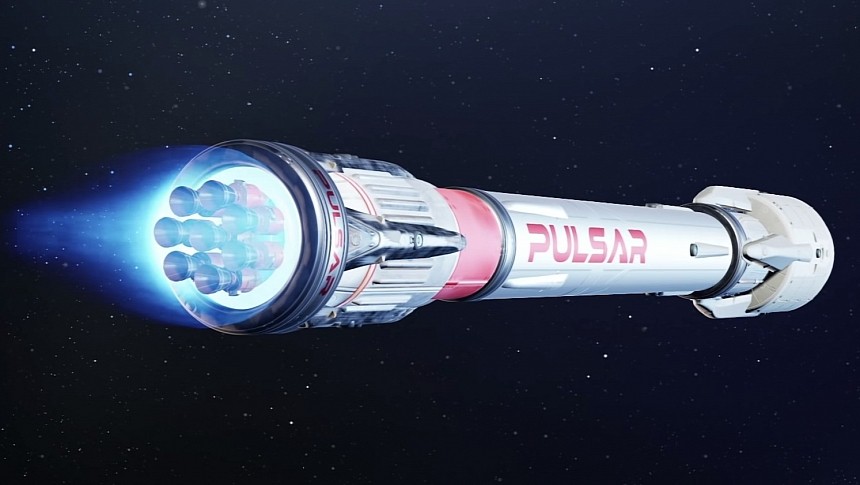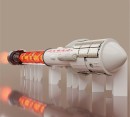Earlier this year, NASA and DARPA announced the goal to field a nuclear fission-powered spacecraft capable of ferrying human crews from Earth to Mars expediently sometime before this decade is out. If accomplished, the Demonstration Rocket for Agile Cislunar Operations (DRACO) spacecraft would be the most advanced spacecraft rocket system ever put into operation. That is unless the team at Pulsar Fusion based out of Bletchley in South East England has their say. Their ambitions call for a novel space rocket powered by, of all things, nuclear fusion.
Now, it might be difficult not to write off Pulsar Fusion's operation as little more than weapons-grade ambition. Nuclear fusion is notoriously difficult to generate more energy in the output of a reaction than the level of energy needed to create the reaction in the first place. In all of human history, this achievement, called scientific breakeven, is conventionally thought to have occurred only once. This was at the National Ignition Facility in Livermore, California, and even then, its fusion energy gain factor of 1.54 has been disputed in the broader scientific community.
Even so, Pulsar Fusion, headed by its founder and CEO Richard Dinan, believes not only that nuclear fusion is capable of being adapted for space exploration in the near future, but that fusion is the only propulsion capable of taking humans to the fringes of our Solar System and beyond in the average human lifetime. For the moment, only a single nuclear rocket engine has been built for the sole purpose of ferrying humans into space, the fission-based NERVA rocket developed by Los Alamos Laboratories of New Mexico back in the mid-to-late 1960s. Even with the cards stacked against them, Dinan and his team believe they have what it takes to build a fusion rocket from scratch.
Per their initial blueprints, Pulsar Fusion's first nuclear rocket design consists of a 26-foot (8 m) long fusion chamber in which consecutive sections of electromagnets are set to manipulate the flow of superheated fusion plasma in a way that creates extremely high propulsive thrust. In theory, it should make enough power to cut the transit from the Earth to Saturn from eight years down to just two. With this in mind, the benefits such a spacecraft would have for more emotionally charged human space exploration targets like Mars surely speak for themselves. For the moment, Pulsar Fusion plans to fire a prototype of its fusion rocket sometime in 2027.
If all goes according to plans, the engine will fire the same year DARPA/NASA's DRACO rocket makes its first orbital test flight. Could fission and fusion duke it out for supremacy in a space-faring industry of the near future? That sounds like the kind of narrative you could write a movie around.
Even so, Pulsar Fusion, headed by its founder and CEO Richard Dinan, believes not only that nuclear fusion is capable of being adapted for space exploration in the near future, but that fusion is the only propulsion capable of taking humans to the fringes of our Solar System and beyond in the average human lifetime. For the moment, only a single nuclear rocket engine has been built for the sole purpose of ferrying humans into space, the fission-based NERVA rocket developed by Los Alamos Laboratories of New Mexico back in the mid-to-late 1960s. Even with the cards stacked against them, Dinan and his team believe they have what it takes to build a fusion rocket from scratch.
Per their initial blueprints, Pulsar Fusion's first nuclear rocket design consists of a 26-foot (8 m) long fusion chamber in which consecutive sections of electromagnets are set to manipulate the flow of superheated fusion plasma in a way that creates extremely high propulsive thrust. In theory, it should make enough power to cut the transit from the Earth to Saturn from eight years down to just two. With this in mind, the benefits such a spacecraft would have for more emotionally charged human space exploration targets like Mars surely speak for themselves. For the moment, Pulsar Fusion plans to fire a prototype of its fusion rocket sometime in 2027.
If all goes according to plans, the engine will fire the same year DARPA/NASA's DRACO rocket makes its first orbital test flight. Could fission and fusion duke it out for supremacy in a space-faring industry of the near future? That sounds like the kind of narrative you could write a movie around.






